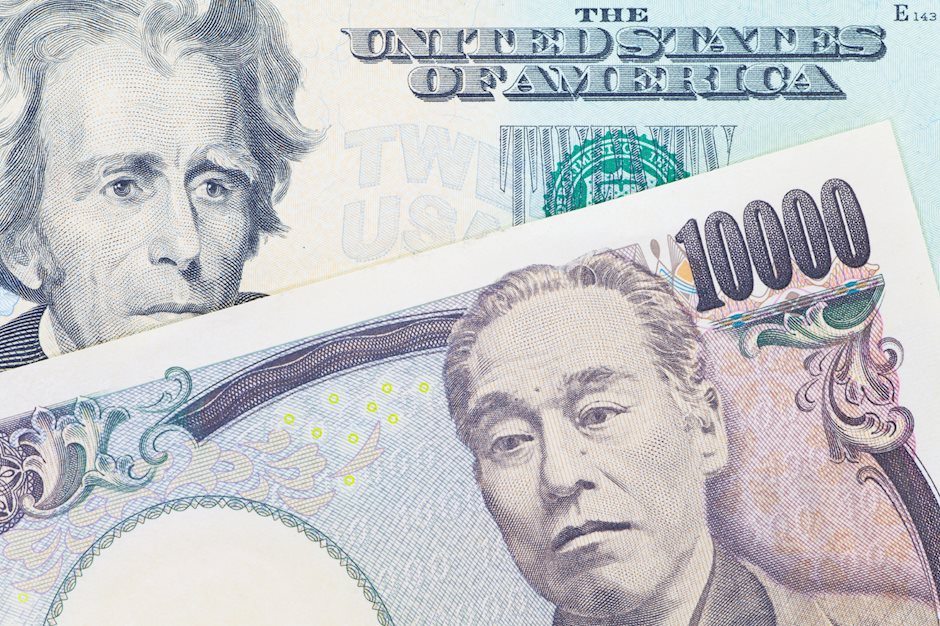Japanese Yen holds above 157.00 against USD, looks to US macro data for fresh impetus
- The Japanese Yen struggles to build on the previous day’s solid recovery from a multi-decade low.
- The divergent BoJ-Fed policy expectations and a positive risk tone undermine the safe-haven JPY.
- The emergence of some USD buying provides an additional boost to the USD/JPY pair on Tuesday.

The Japanese Yen (JPY) comes under renewed selling pressure following the previous day's knee-jerk reaction to a possible government intervention and maintains its offered tone heading into the European session on Tuesday. Expectations that the gap between interest rates in Japan and the United States (US) will remain wide for some time, along with easing geopolitical tensions in the Middle East, turn out to be key factors undermining the safe-haven JPY. This, along with the emergence of some US Dollar (USD) dip-buying, acts as a tailwind for the USD/JPY pair.
Traders, however, seem reluctant and prefer to wait for more cues about the Federal Reserve's (Fed) rate-cut path before placing fresh directional bets. Hence, the market focus will remain glued to the outcome of a two-day FOMC policy meeting, scheduled to be announced on Wednesday, and the release of the closely-watched US Nonfarm Payrolls (NFP) report on Friday. In the meantime, Tuesday's US economic docket – featuring the Chicago PMI and the Conference Board's Consumer Confidence Index – might provide some impetus to the USD/JPY pair.
Daily Digest Market Movers: Japanese Yen is pressured by the BoJ's uncertain rate outlook
- The Japanese Yen witnessed a dramatic intraday turnaround after touching a fresh 34-year low on Monday amid reports that Japanese authorities intervened in the market to support the domestic currency.
- Japan's top currency diplomat Masato Kanda refrained from confirming if there was an intervention but said that the current developments in the currency market were “speculative, rapid and abnormal”.
- The strong JPY recovery, however, lost traction in the wake of firming expectations that a significant interest-rate differential between Japan and the United States is likely to remain in place for some time.
- The Bank of Japan decided to keep its key interest rate unchanged at the end of April policy meeting last Friday and said that it will continue buying government bonds in line with the guidance made in March.
- The BoJ lowered its economic growth forecast for the current fiscal year 2024, while data on Monday showed that inflation in Tokyo slowed for the second month in April, raising doubts about further policy tightening.
- The Federal Reserve is expected to keep rates higher for longer, and the bets were reaffirmed by Friday's release of the Personal Consumption Expenditures (PCE) Price Index, which pointed to sticky inflation.
- Data released from Japan this Tuesday showed that the unemployment rate held steady at 2.6% in March as compared to the 2.5% anticipated, while Industrial Production grew by 3.8% during the reported month.
- Meanwhile, Japan's Retail Sales declined by 1.2% in March and the yearly rate, though recorded a slower-than-expected rise, pointed to expansion for the 25th consecutive month, doing little to influence the JPY.
- Traders now look to the US economic docket – featuring the Chicago PMI and the Conference Board's Consumer Confidence Index — for short-term opportunities ahead of the FOMC policy decision on Wednesday.
- Apart from this, important US macro data scheduled at the beginning of a new month, influencing the monthly jobs data, should influence the USD price dynamics and provide a fresh impetus to the USD/JPY pair.
Technical Analysis: USD/JPY bulls await a move beyond 157.00 mark before placing fresh bets
From a technical perspective, spot prices showed resilience below the 200-hour Simple Moving Average (SMA) on Monday. The subsequent move beyond the 38.2% Fibonacci retracement level of the overnight sharp pullback from a multi-decade top favored bullish traders. Moreover, oscillators on hourly charts have again started gaining positive traction and validate the constructive outlook for the USD/JPY pair. Hence, some follow-through strength beyond the 157.00 mark towards the 50% Fibo. level near the 157.40 region looks like a distinct possibility. The momentum could extend further towards the 158.00 round figure or the 61.8% Fibo. level, which should now act as a key pivotal point.
On the flip side, weakness back below the 156.75-156.70 area now seems to find some support near the 156.35 region ahead of the 156.00 mark. A convincing breakthrough the latter might expose the 200-hour SMA support, currently pegged near the 155.35 zone, before the USD/JPY pair weakens further below the 155.00 psychological mark and challenges the overnight swing low, around mid-154.00s.
Economic Indicator
Fed Interest Rate Decision
The Federal Reserve (Fed) deliberates on monetary policy and makes a decision on interest rates at eight pre-scheduled meetings per year. It has two mandates: to keep inflation at 2%, and to maintain full employment. Its main tool for achieving this is by setting interest rates – both at which it lends to banks and banks lend to each other. If it decides to hike rates, the US Dollar (USD) tends to strengthen as it attracts more foreign capital inflows. If it cuts rates, it tends to weaken the USD as capital drains out to countries offering higher returns. If rates are left unchanged, attention turns to the tone of the Federal Open Market Committee (FOMC) statement, and whether it is hawkish (expectant of higher future interest rates), or dovish (expectant of lower future rates).
Read more.Next release: Wed May 01, 2024 18:00
Frequency: Irregular
Consensus: 5.5%
Previous: 5.5%
Source: Federal Reserve
Author

Haresh Menghani
FXStreet
Haresh Menghani is a detail-oriented professional with 10+ years of extensive experience in analysing the global financial markets.

















